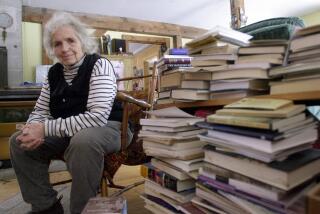Poles and Jews: troubled history
What a sad story this is -- the story of Polish-Jewish relations for nearly 1,000 years. Sad, for there were hopeful moments during this period, promising that relations between these two peoples would turn out happier than they did. Poland in the Middle Ages was a relatively tolerant place where kings and much of the nobility allowed Jews to manage their legal and cultural affairs and have a degree of religious freedom virtually unknown in the rest of Europe.
Unlike Spain and England, Poland never expelled its Jews. True, even in the best of times Jews elicited religious scorn, hostility and occasional Catholic-inspired violence. Not until Jesuits began to arrive in the mid-16th century did Catholic anti-Judaism threaten Jews’ relative peace and security. Here the story turns nasty. Virulent anti-Judaic teachings and myths -- that Jews engaged in ritual murder, satanic rites, the poisoning of wells and the selling of cheap alcohol to foster drunkenness and depravity among the peasant masses, destruction of the Host and the most potent myth of all, the murder of the son of God -- steadily increased in number and intensity. Europe was flooded with anti-Jewish tracts and cases of physical violence, but the tendency to see Jews as “the Other” -- the sinister, conniving, hating and hateful alien -- became particularly blatant in Poland.
For the record:
12:00 a.m. June 6, 2004 For The Record
Los Angeles Times Sunday June 06, 2004 Home Edition Main News Part A Page 2 National Desk 2 inches; 83 words Type of Material: Correction
World War II Poland: In a review of the book “Contested Memories: Poles and Jews During the Holocaust and Its Aftermath” (“Poles and Jews: Troubled History,” Book Review, Jan. 18), Abraham Brumberg incorrectly said that “figures now accepted by all historians tell us
As Zvi Gitelman puts it in “Contested Memories,” a significant new collection of 22 essays by Jewish and Polish scholars that illuminates this troubling relationship, Jews in Poland were the perfect outsiders. They differed from Poles in every external marker conceivable: They looked different, dressed different, spoke a different language, ate different foods -- and were forbidden to eat typically Polish fare such as ham.
Hostility toward them, as the “Other,” grounded in local legends and folkways and nourished by the Catholic Church, became even more bellicose as Poland ceased being a multiethnic country where ethnic Poles constituted less than 50% of the population. In three separate 18th century partitions that ultimately cost Poland its sovereignty, the country was forced to cede territory to its predatory neighbors -- Prussia, Austria and Russia.
These experiences bred a vehement nationalism, a militant Catholicism and an antagonism toward groups presumed linked to Poland’s enemies: Germans, Ukrainians, Belorussians and most of all Jews. What made it so grimly ironic was that as animus toward Jews grew, Jews -- especially more secularized ones -- increasingly admired Polish culture and felt a profound kinship with Polish struggles for independence. Many joined Polish insurrections from the late 18th century on.
In the 19th century, a number of ethnic Poles sought to heal the breach between the two peoples. Poland’s greatest romantic poet, Adam Mickiewicz, toyed with the idea of creating “Jewish legions” to fight alongside the “brotherly” Poles in their common struggle for a new Poland, where Jews would enjoy rights on par with ethnic Poles and other nationalities. But Mickiewicz died just as he began to seek help for his project, and until recently the memory of his philosemitism was obliterated from Polish history.
At the turn of the 20th century, Polish writers such as Eliza Orzeszkowa and Boleslaw Prus declared that Poles must accept Jews as equals -- if the latter would shed their “medieval” clothing, habits and language, although they wouldn’t have to convert to Catholicism. The Jewish answer was, in effect, “Thank you, but no.” To quote Gitelman: “Even when more and more Jews began to ... dress, speak, and eat like Poles, they were often resented for trying to ‘pass’ and insinuate themselves into Polish society.”
In his essay “Poland and the Polish Nation as Reflected in the Jewish Underground Press,” Daniel Blatman writes, “Assimilationists in [German] occupied Warsaw continued to maintain their identity and publish their own paper, copies of which have survived the ghetto’s destruction.” They persevered even though assimilationists were disdained by most Poles, and during the war Pope Pius XII said nothing when the Nazis treated Catholic converts no differently than it did all other Jews -- that is, dispatched them to gas chambers in Treblinka and Majdanek.
Many contributors in this collection, which includes a preface by Israeli journalist Tom Segev, deal directly or indirectly with the curious penchant of some observers (not represented in this volume) to compare or virtually equate anti-Semitism with what some Poles call “anti-Polonism,” that is, hatred of all Poles.
But as Barbara Engelking-Boni explains in her essay “Psychological Distances Between Poles and Jews in Occupied Warsaw,” the magnitudes and practical consequences of such hatreds were vastly different as were their causes. Indeed, “Polish aggression toward Jews may have been in a certain sense more painful than the German terror,” she writes. Adds Gitelman: Jews in Poland were “deeply scarred by the anti-Semitism they had experienced, and which was transmitted [to subsequent generations] as part of collective memory.” Precisely.
Consider the case of the szmalcowniki -- Poles who preyed upon Jews who had escaped the ghetto (often with the help of Gentile friends), extorting money and valuables and threatening to denounce their victims to the Gestapo unless they got what they wanted. There is no way to determine how many such extortionists operated in Warsaw and other cities. But we do know that there were many, and that only a few Poles would come to the aid of a Jew pounced upon by one or more szmalcowniki, that crossing from the ghetto into the “Aryan” part of a city was an action fraught with incalculable danger, and that some Jews, as pointed out by Engelking-Boni, unable to “pass,” actually chose to go back to the ghetto. Gunnar S. Paulsson, in his essay “Polish-Jewish Relations in Occupied Warsaw, 1940-43,” writes that there were more Jews hiding outside the ghettos than was assumed. But the impact of the extortionist phenomenon cannot be easily quantified. Here is an icy fragment of a memoir cited by Engelking-Boni:
“When we made the first steps on the other side of the ghetto, we were assaulted by a swarm of boys, blackmailers. ... They started chasing us and ... shouting that we should give them money. Of course we were not wearing the armbands [mandatory for Jews]. In the beginning I thought: we will give something to this one ... and they will leave us in peace. But they were like a swarm. ... We got into a horse cab ... and suddenly -- next to us -- one guy on a bicycle and one on another one and then a third one appeared. Each reached out his hand.... We [ended up] without money, without rings, without watches or shoes left.”
We probably cannot even grasp the impact on the surviving Jews of this and similar experiences related in the book. After all, these were not Germans -- these were Poles, who for hundreds of years had lived with the Jews, fellow citizens, neighbors, not SS men. Is it any wonder that the Jews felt devastated, abandoned, because so many of them went to their deaths while most of their Polish neighbors were patently indifferent to or in fact applauded their fate? Yes, there were many Poles who risked their lives to protect the Jews. Members of Zegota, a clandestine group of Poles who tried to help Jews, worked feverishly in 1942-44 to snatch as many as they could from the Nazi maw. But according go their own estimates, only 1% of Polish Jews were saved by Poles. Did other countries fare better? Some definitely yes, others no. But it must be remembered that in Poland alone, millions of Jews were put to death almost literally in full view of the rest of the population. The Poles, too, were considered “subhuman” by the Nazis, and were treated with utmost brutality. But in the final count, as the figures now accepted by all historians tell us, 97% of Polish Jews were killed by the Nazis, while 95% of ethnic Poles, all their harrowing experiences notwithstanding -- and they were harrowing -- survived the war.
The story of Polish-Jewish relations, to repeat, is a sad one. Yet at the turn of the 21st century, Poland went through a remarkable exercise in self-examination and self-criticism, triggered by Polish American scholar Jan Gross’ book (a chapter of which appears here) about a series of massacres of Jews by Poles in July 1941. The debate was noteworthy for its sweep and for the truths about Polish anti-Semitism, for the first time acknowledged by many Poles. If it proves a harbinger of things to come, books such as “Contested Memories” will perhaps be regarded as part of history, of only limited contemporaneous interest. For the time being, this book deserves praise for offering a fascinating insight into a significant piece of modern history.
More to Read
Sign up for Essential California
The most important California stories and recommendations in your inbox every morning.
You may occasionally receive promotional content from the Los Angeles Times.










